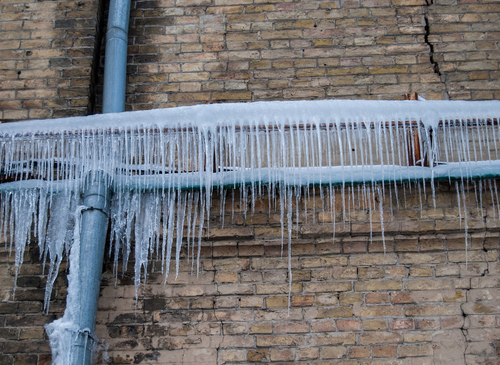This great article directly below about How To Avoid Freezing Pipes is indeed remarkable. You should check it out.

Cold weather can damage your plumbing, particularly by freezing pipes. Below's exactly how to avoid it from taking place and what to do if it does.
Introduction
As temperature levels drop, the threat of frozen pipes rises, possibly leading to costly repairs and water damage. Understanding exactly how to prevent icy pipes is crucial for home owners in cold climates.
Recognizing Icy Pipelines
What causes pipes to ice up?
Pipelines ice up when subjected to temperature levels below 32 ° F (0 ° C) for expanded periods. As water inside the pipes freezes, it expands, taxing the pipe walls and possibly causing them to rupture.
Risks and damages
Icy pipelines can lead to supply of water interruptions, home damages, and pricey repair services. Burst pipelines can flood homes and cause comprehensive structural damages.
Indicators of Frozen Piping
Recognizing frozen pipelines early can avoid them from breaking.
How to determine icy pipes
Seek decreased water circulation from faucets, uncommon smells or noises from pipelines, and noticeable frost on revealed pipelines.
Prevention Tips
Insulating susceptible pipelines
Cover pipes in insulation sleeves or utilize warmth tape to shield them from freezing temperature levels. Focus on pipes in unheated or exterior areas of the home.
Heating methods
Keep interior spaces appropriately warmed, specifically locations with pipes. Open cupboard doors to enable warm air to circulate around pipelines under sinks.
Securing Outdoor Pipes
Garden pipes and outdoor faucets
Separate and drain pipes garden hoses before wintertime. Mount frost-proof spigots or cover outside taps with insulated caps.
What to Do If Your Pipes Freeze
Immediate actions to take
If you presume icy pipelines, keep faucets available to eliminate stress as the ice melts. Use a hairdryer or towels soaked in warm water to thaw pipelines gradually.
Long-Term Solutions
Structural modifications
Consider rerouting pipes away from outside wall surfaces or unheated locations. Include added insulation to attics, cellars, and crawl spaces.
Upgrading insulation
Buy top quality insulation for pipes, attics, and wall surfaces. Correct insulation helps maintain consistent temperatures and lowers the threat of icy pipes.
Verdict
Protecting against icy pipes requires positive actions and fast reactions. By recognizing the causes, indications, and preventive measures, property owners can safeguard their plumbing during cold weather.
5 Ways to Prevent Frozen Pipes
Drain Outdoor Faucets and Disconnect Hoses
First, close the shut-off valve that controls the flow of water in the pipe to your outdoor faucet. Then, head outside to disconnect and drain your hose and open the outdoor faucet to allow the water to completely drain out of the line. Turn off the faucet when done. Finally, head back to the shut-off valve and drain the remaining water inside the pipe into a bucket or container. Additionally, if you have a home irrigation system, you should consider hiring an expert to clear the system of water each year.
Insulate Pipes
One of the best and most cost-effective methods for preventing frozen water pipes is to wrap your pipes with insulation. This is especially important for areas in your home that aren’t exposed to heat, such as an attic. We suggest using foam sleeves, which can typically be found at your local hardware store.
Keep Heat Running at 65
Your pipes are located inside your walls, and the temperature there is much colder than the rest of the house. To prevent your pipes from freezing, The Insurance Information Institute suggests that you keep your home heated to at least 65 degrees, even when traveling. You may want to invest in smart devices that can keep an eye on the temperature in your home while you’re away.
Leave Water Dripping
Moving water — even a small trickle — can prevent ice from forming inside your pipes. When freezing temps are imminent, start a drip of water from all faucets that serve exposed pipes. Leaving a few faucets running will also help relieve pressure inside the pipes and help prevent a rupture if the water inside freezes.
Open Cupboard Doors
Warm your kitchen and bathroom pipes by opening cupboards and vanities. You should also leave your interior doors ajar to help warm air circulate evenly throughout your home.
.jpg)
I was guided to that report about How To Avoid Freezing Pipes from a friend on another domain. Enjoyed our write-up? Please share it. Help someone else locate it. We thank you for your readership.
Click For More Information